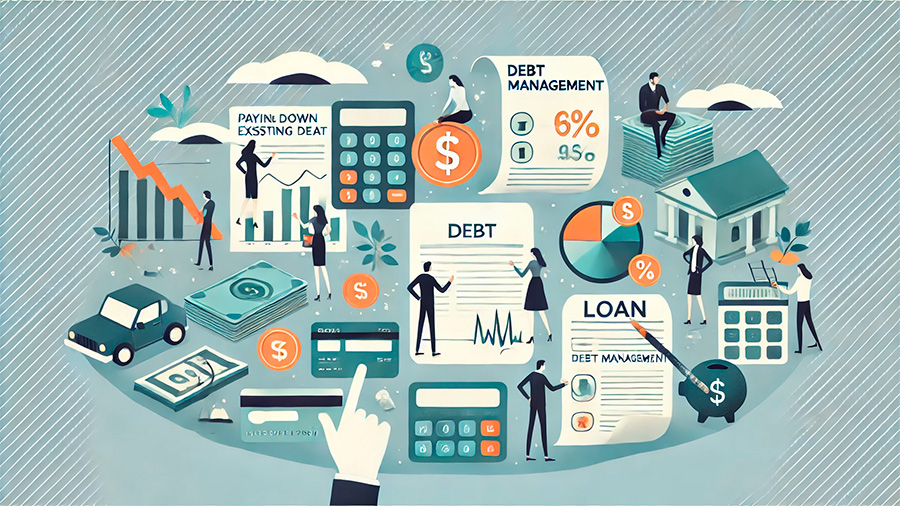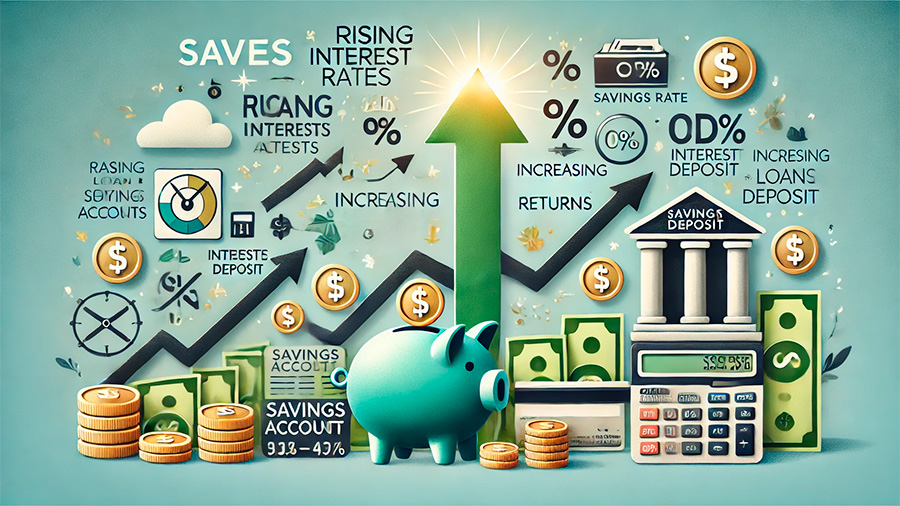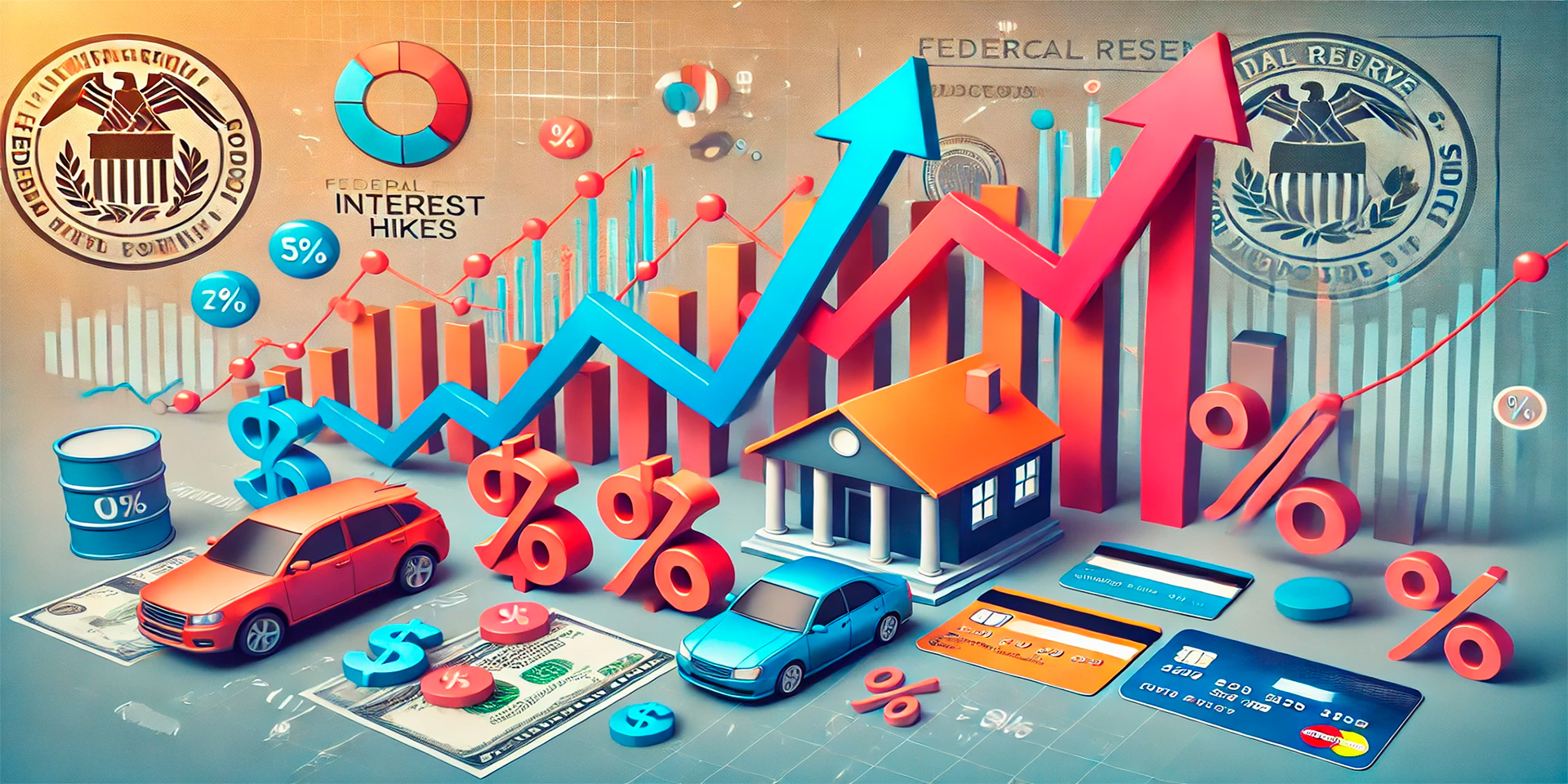As the Federal Reserve (Fed) increases interest rates, the cost of borrowing money for consumer loans, such as mortgages, auto loans, and credit card debt, becomes more expensive. The Fed raises rates to control inflation and stabilize the economy, but this can also lead to higher monthly payments for borrowers and increased interest over the life of loans. For consumers, understanding how these rate hikes affect loan costs is critical to managing personal finances and making informed decisions about future borrowing.
When the Fed raises interest rates, lenders typically follow suit, increasing the rates on new loans and, in some cases, adjusting variable-rate loans. These changes can significantly impact monthly budgets, making it essential for consumers to prepare for rising costs by adopting smart financial strategies.
How Rising Fed Rates Affect Different Types of Loans
As the Fed increases rates, its decisions ripple across different types of loans. Knowing how each type of loan is affected allows you to make strategic decisions about existing debts and future borrowing needs.
Mortgage Loans
Mortgage rates, particularly those for fixed-rate and adjustable-rate mortgages (ARMs), are closely tied to Fed rate hikes. While fixed-rate mortgages may not see immediate changes, new fixed-rate mortgages tend to come with higher rates when the Fed raises its benchmark rate. Adjustable-rate mortgages, on the other hand, may see rate increases more quickly, as they are designed to adjust periodically based on broader market rates.
- Fixed-rate mortgages: While your interest rate won’t change if you already have a fixed-rate mortgage, future borrowers will likely face higher rates, increasing the cost of homeownership.
- Adjustable-rate mortgages (ARMs): For borrowers with ARMs, the interest rate may rise at the next adjustment period, leading to higher monthly payments.
If you’re considering a new mortgage or refinancing an existing loan, it may be wise to lock in a fixed rate before rates climb even higher.
Auto Loans
Auto loan interest rates also increase as the Fed raises rates, making it more expensive to finance a car. With higher rates, monthly payments on new auto loans rise, which can lead to paying more over the life of the loan. Auto loan terms tend to be shorter than mortgages, but even small increases in the interest rate can add up over time.
- Higher monthly payments: As interest rates rise, your monthly auto loan payments will increase, making it more costly to buy a vehicle.
- Reduced affordability: Rising interest rates can impact how much car you can afford, as higher rates mean more of your budget goes toward interest rather than the principal.
If you’re planning to finance a vehicle, it may be beneficial to shop around for the best rate or consider purchasing before rates rise further.
Credit Card Debt
Credit card interest rates are often variable, meaning they are directly impacted by changes in the Fed’s benchmark rate. When the Fed raises rates, credit card companies typically increase their rates in response. This means that consumers carrying a balance on their credit cards will see their interest charges rise, making it more expensive to carry debt.
- Higher interest charges: As credit card rates increase, carrying a balance on your card becomes more costly, as more of your payment goes toward interest rather than reducing your principal balance.
- Impact on minimum payments: For those with significant credit card debt, rising rates can lead to higher minimum payments, stretching household budgets.
To minimize the impact of rising interest rates on credit card debt, consider paying off balances as quickly as possible or transferring balances to a card with a lower introductory rate.
Personal Loans
Personal loans, like auto loans and mortgages, are also affected by Fed rate hikes. When rates rise, new personal loans tend to carry higher interest rates, making it more expensive to borrow money for large expenses or debt consolidation. If you already have a fixed-rate personal loan, your interest rate will remain the same, but future loans will likely come with higher costs.
- Increased borrowing costs: Higher rates on personal loans mean that you will pay more in interest over the life of the loan, making it more expensive to borrow money for personal needs.
- Debt consolidation considerations: Rising rates may make debt consolidation loans less attractive if the rates are higher than those of your current debts.
If you’re considering taking out a personal loan, it may be beneficial to secure a fixed-rate loan before rates rise further.

Strategies to Prepare for Rising Loan Costs
As borrowing costs increase, it’s important to take proactive steps to prepare for higher interest rates and minimize their impact on your personal finances. By managing existing debt and planning for future borrowing, you can better navigate the challenges of a rising interest rate environment.
Pay Down High-Interest Debt
One of the most effective ways to protect yourself from rising interest rates is to pay down high-interest debt, such as credit card balances, as quickly as possible. Credit card rates are variable, meaning they will increase in response to Fed rate hikes. By reducing or eliminating credit card debt, you can avoid higher interest charges in the future.
- Prioritize high-interest debt: Focus on paying off debts with the highest interest rates first, as these will become more expensive as rates rise.
- Consider balance transfers: If you have significant credit card debt, consider transferring your balance to a card with a 0% introductory APR offer. This can give you a period of interest-free payments, allowing you to pay down your debt without accruing additional interest.
By reducing your debt load now, you’ll be in a stronger position to manage rising loan costs in the future.
Refinance Existing Loans
If you have existing loans with high interest rates or adjustable rates, refinancing may be a good option to lock in a lower fixed rate before the Fed raises rates further. Refinancing can be especially beneficial for adjustable-rate mortgages, as it allows you to switch to a fixed-rate mortgage and avoid future rate increases.
- Refinance to a fixed rate: If you have an ARM or other variable-rate loan, refinancing to a fixed-rate loan can help you lock in a stable interest rate and avoid the uncertainty of future rate hikes.
- Shop around for the best rates: Before refinancing, compare offers from different lenders to ensure you get the best possible rate and terms.
Refinancing can help you lower your monthly payments and save money on interest over the life of your loan, making it an important strategy in a rising rate environment.
Build an Emergency Fund
Rising interest rates can strain household budgets, especially if you’re facing higher monthly payments on loans or credit cards. Building a robust emergency fund can help you weather financial challenges and avoid taking on additional high-interest debt in the future.
- Save for unexpected expenses: Having an emergency fund in place allows you to cover unexpected expenses, such as car repairs or medical bills, without relying on high-interest credit cards or loans.
- Increase your savings rate: As loan costs rise, consider increasing the amount you save each month to build a financial cushion. This will give you more flexibility to manage rising expenses.
A well-funded emergency fund provides financial security, allowing you to navigate higher loan costs without adding to your debt load.
Delay Major Purchases
In a rising rate environment, it may be wise to delay major purchases that require financing, such as buying a new car or home. Higher interest rates increase the cost of borrowing, making these purchases more expensive over time. If possible, consider waiting until rates stabilize or saving up a larger down payment to reduce the amount you need to borrow.
- Wait for better terms: If you’re planning a major purchase, waiting for rates to stabilize or for better loan terms could save you money in the long run.
- Save for a larger down payment: Increasing your down payment can reduce the size of your loan, which can help offset the impact of higher interest rates.
Delaying major purchases gives you time to adjust to rising loan costs and better position yourself financially for future borrowing.
Adjust Your Budget for Higher Payments
As interest rates rise, your monthly loan payments may increase, particularly for variable-rate loans or credit cards. To prepare for these changes, review your budget and make adjustments to ensure you can accommodate higher payments without straining your finances.
- Reevaluate discretionary spending: Identify areas where you can cut back on non-essential expenses to free up cash for higher loan payments.
- Plan for future rate hikes: Build flexibility into your budget by anticipating future rate increases. This will help you avoid financial stress if rates continue to rise.
By adjusting your budget now, you’ll be better equipped to handle higher loan costs as the Fed continues to raise interest rates.

Take Advantage of Higher Interest Savings Accounts
While rising rates make loans more expensive, they can also benefit savers by increasing the interest rates on savings accounts, certificates of deposit (CDs), and other interest-bearing accounts. As the Fed raises rates, banks typically offer higher returns on savings products, giving you an opportunity to grow your money faster.
- Shop for higher-yield savings accounts: Look for savings accounts or money market accounts that offer competitive interest rates, allowing you to earn more on your deposits.
- Consider CDs: If you don’t need immediate access to your savings, consider investing in a CD with a higher interest rate. CDs often offer better rates than traditional savings accounts, especially during periods of rising rates.
By taking advantage of higher interest rates on savings products, you can offset some of the costs associated with rising loan rates.
Final Thoughts: Preparing for Rising Loan Costs
As the Federal Reserve raises interest rates to combat inflation and stabilize the economy, consumers should expect to face higher loan costs, from mortgages and auto loans to credit card debt and personal loans. However, by taking proactive steps—such as paying down high-interest debt, refinancing existing loans, building an emergency fund, and adjusting your budget—you can mitigate the impact of rising rates and protect your financial well-being.
Planning ahead and adopting smart financial strategies will allow you to navigate the challenges of a rising rate environment while minimizing the effect on your overall financial health. By staying informed and making thoughtful decisions, you can better manage your debt and prepare for the future in an era of higher loan costs.

